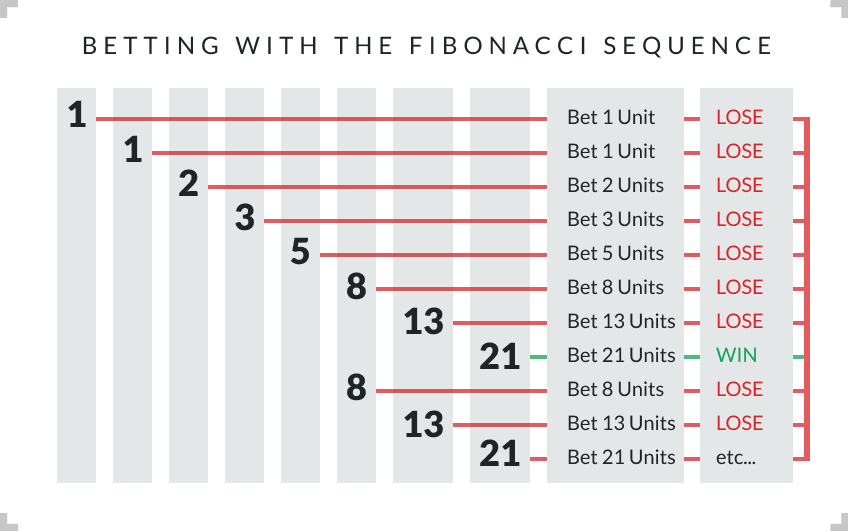
When it comes to gambling, strategies and systems are often employed by players in an attempt to increase their chances of winning. One such strategy that has gained popularity over the years is the Fibonacci sequence.
What is the Fibonacci Sequence?
The Fibonacci sequence is a series of numbers in which each number is the sum of the two preceding ones. It starts with 0 and 1, and each subsequent number is the sum of the previous two. The sequence goes like this: 0, 1, 1, 2, 3, 5, 8, 13, 21, 34, and so on.
This mathematical concept was introduced to the Western world by Italian mathematician Leonardo of Pisa, also known as Fibonacci, in the 13th century. The sequence has many intriguing properties and can be found in various fields such as mathematics, nature, and even gambling.
The Fibonacci Sequence and Gambling
The Fibonacci sequence has been employed in gambling strategies due to its inherent pattern and potential for progression. The concept revolves around the idea of adjusting your bets based on the Fibonacci sequence in the hopes of recovering losses and making a profit in the long run.
Here’s how it works: each number in the Fibonacci sequence represents the amount of units you should bet. For example, if your betting unit is $10, your bets would go as follows: $10, $10, $20, $30, $50, $80, and so on. You keep progressing through the sequence until you win, at which point you go back two steps.
Using the Fibonacci Sequence in Specific Games
While the Fibonacci sequence can be applied to various casino games and sports betting, it is particularly popular in games with even-money bets, such as roulette, baccarat, and blackjack.
Roulette
In roulette, players often use the Fibonacci sequence to determine their bets on red or black, as these bets have close to 50% chance of winning. By adjusting their bets using the Fibonacci progression, players aim to cover their losses and eventually come out ahead.
For example, if you bet $10 on red and lose, you move one step forward in the Fibonacci sequence and bet $10 again. If you lose again, you move to the next number in the sequence, which is $20. The idea is that eventually, you will win, and when you do, you go back two steps in the sequence and start over.
Baccarat
In baccarat, players often use the Fibonacci sequence to determine their bets on either the player or the banker. Similar to roulette, these bets have close to a 50% chance of winning, making the Fibonacci strategy applicable.
Players place their bets on either the player or the banker and adjust the amount based on the Fibonacci sequence. If you lose, you progress through the sequence, and if you win, you go back two steps. The aim is to come out on top after a series of wins.
Blackjack
In blackjack, the Fibonacci sequence can be used in different ways. Some players adjust their bets based on the sequence, while others use it to determine their playing decisions, such as whether to hit or stand.
For betting, players increase or decrease their bets based on whether they win or lose. This can add some structure to their betting patterns and help manage their bankroll effectively.
For playing decisions, players can use the Fibonacci sequence in conjunction with a basic blackjack strategy. The sequence can act as a guideline for deciding whether to take another card (hit) or stand based on the number assigned to the player’s hand and the dealer’s up card.
The Pros and Cons of the Fibonacci Strategy
Like any gambling strategy, the Fibonacci sequence has its advantages and disadvantages.
One of the main advantages is the logical progression that it provides. Unlike more aggressive strategies like the Martingale, the Fibonacci strategy doesn’t require doubling your bets after losses, which can quickly escalate your risk and bankroll. The Fibonacci sequence allows for a more gradual increase in bet size.
Another advantage is that the Fibonacci strategy can help players recover from losses more efficiently. By going back two steps in the sequence after a win, players can recoup their losses and potentially make a profit even if they have more losing bets than winning ones.
However, it’s important to note that the Fibonacci strategy is not foolproof and does not guarantee winnings in the long run. Like all gambling strategies, it is subject to variance and the inherent house edge present in casino games. Streaks of losses can still occur, leading to substantial losses if not managed properly.
In Conclusion
The Fibonacci sequence is an interesting mathematical concept that has found its way into the world of gambling strategies. While it can be an effective tool for managing bets and recovering losses, it’s essential to remember that gambling always carries risks. The Fibonacci strategy should be used cautiously and combined with sound bankroll management and a thorough understanding of the game you’re playing.
Whether you choose to apply the Fibonacci sequence or opt for a different strategy, always gamble responsibly and for entertainment purposes only. Good luck!